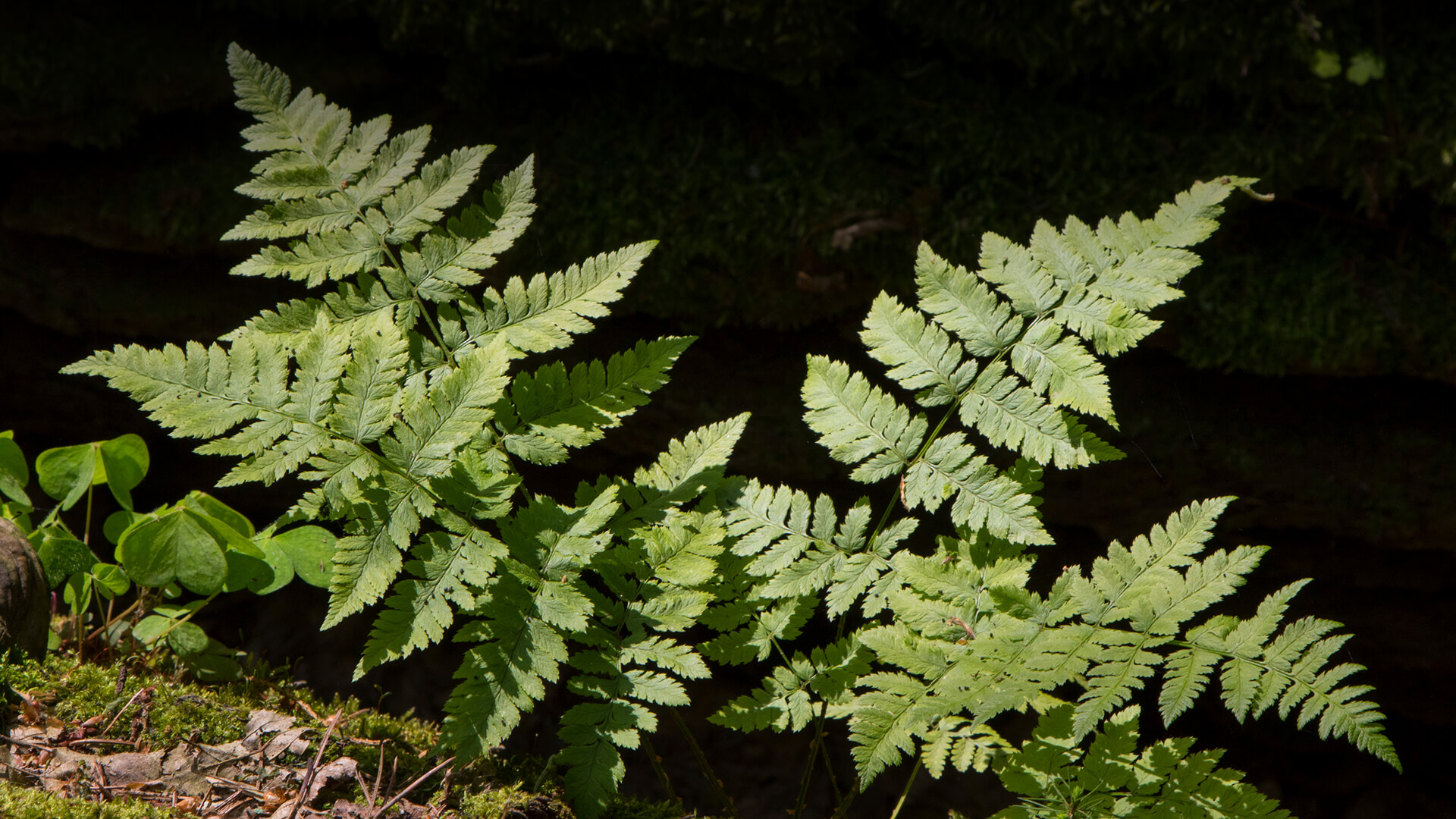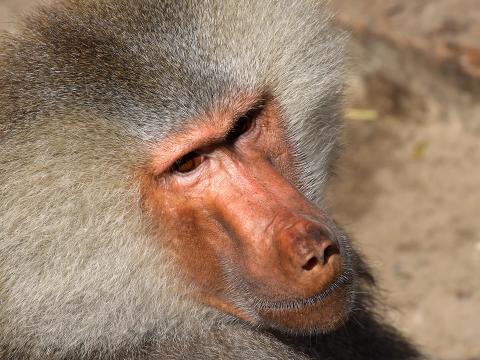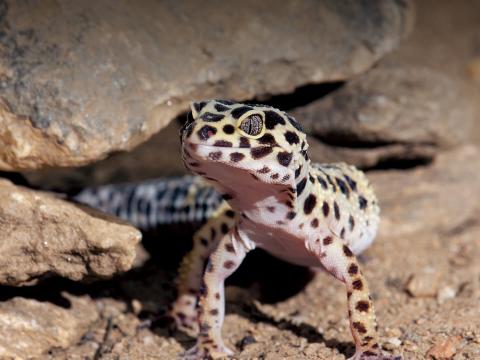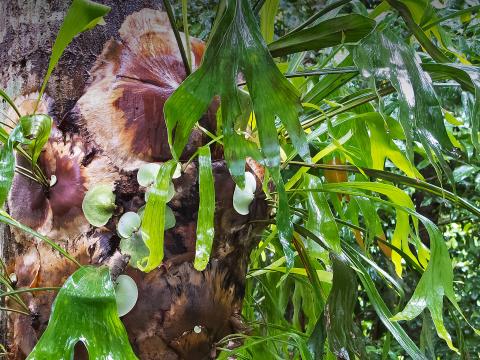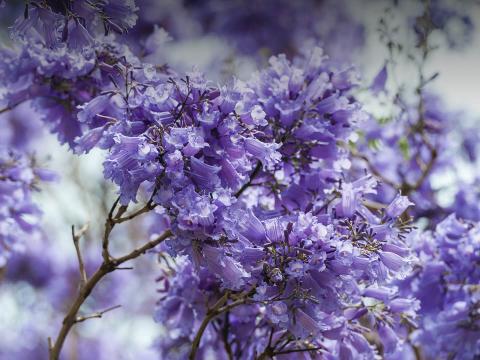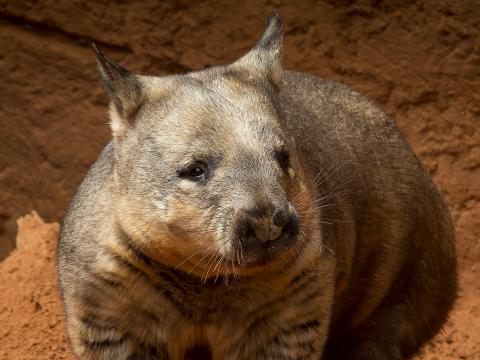Wood Fern
- DIVISION: Pteridophyta
- CLASS: Pteridopsida
- ORDER: Polypodiales
- FAMILY: Dryopteridaceae
- GENUS: Dryopteris
- SPECIES: More than 250 species
Overview
Dryopteris is a very large genus of ferns and the most widespread genus in the world. Wood ferns, also called shield ferns, are typically found in cool, moist woodland areas, although some can tolerate drier conditions. They may grow in soil that is alkaline or acidic, and thrive in full shade or in some sun. The greatest diversity of wood ferns is found in eastern Asia, followed by North America, Mexico, South Africa, and western Europe.
Some of the most common wood ferns in North America are the crested wood fern D. cristata, the evergreen wood fern D. intermedia, the marginal wood fern D. marginalis, and the spinulose wood fern D. carthusiana. One of the most rare is the log fern D. celsa.
Characteristics
Yes, this would be a wood fern!
- Frond: Deciduous or evergreen.
- Blade: Often leathery, dark green, and leaflets are toothed and deeply cut; straight or oval scales on underside of the blade; some species are evergreen.
- Stipe: Grooved and scaly; two primary and one to five secondary, all in a C-shaped pattern facing the top of the blade.
- Sori: Round, forming in one row between blade midrib and margin; spores are brownish.
- Rhizome: Upright or semi-upright, typically no or few hairs.
Cultivation
The requirements for each species vary, but they tend to prefer moist but well-drained soil enriched deeply with humus. They need some shade, and water as needed. They do not need much fertilizer, and the soil around them should not be disturbed too often as the fine roots can be easily damaged. Transplanting is best in spring or early summer, planting the crowns just slightly below the soil and covering lightly with compost or fine mulch. Fall planted ferns do not root out well and may dry out over the winter, but in warmer zones, transplanting can take place almost any time.

